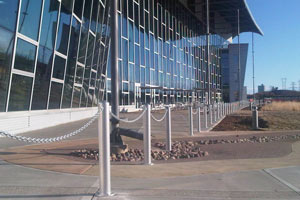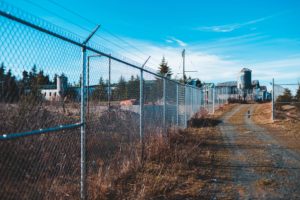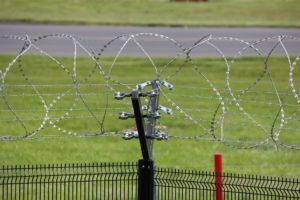

Perimeter Security
While Physical Security is the first line of protection for all facilities, the first layer of Physical Security is the protection of the perimeter of the property, which limits points of entry. Using physical security and CPTED principles the property perimeter should be defined by fences, landscape and/or other barriers. The perimeter needs to be clearly defined to set and indicate boundaries with landscaping, fencing, walls, etc.
The objective of perimeter security is to deter, delay and detect unwanted intrusion, while also enabling controlled access for those authorized. Fences and walls are countermeasures and act as visual lines of demarcation. Security measures can come in many forms such as; gates, bollards, fences, turnstiles, hedges and thorny bushes to name a few, which demarcate boundaries and aim to mitigate threats including vandalism, theft, and intrusion from people or vehicles.
In the absence of the exterior perimeter protection, the building façade/wall becomes the perimeter. Physical perimeter protection would then be best explained as systems and technologies (access control) designed to protect people and assets within a defined area and often it’s the best line of defence.
There are two types of barriers used for perimeter protection: natural barriers and structural barriers.
- Examples of natural barriers include rivers, lakes, and other bodies of water; cliffs and other types of terrain that are difficult to traverse; and areas dense with certain types of plant life (e.g., blackberry bushes that are very thorny and dense).
- Examples of structural barriers include highways, fences, walls, gates, and other types of construction that prohibit or inhibit access.
None of these barriers completely prevent access. They do, however, make it more difficult for unauthorized persons to gain access. When used with other layers of physical control, they can be very effective.


“When you do the things you ought to do, when you ought to do them, soon you will be able to do the things you want to do, when you want to do them” by Kevan Lillace & Duane Morse
